Identifying Rare Earth Elements Using a Tripod and Drone-Mounted Hyperspectral Camera: A Case Study of the Mountain Pass Birthday Stock and Sulphide Queen Mine Pit, California
Abstract
:1. Introduction
2. Geology of the Study Area
3. Materials and Methods
3.1. Materials
3.1.1. Senop HSC-2 Hyperspectral Camera
3.1.2. DJI M600 Pro and Litchi App
- A variety of Zenmuse cameras and stabilizing gimbals were seamlessly integrated. Instead of designing a customized platform like some researchers did [71], we used a DJI Ronin MX gimbal to mount the Senop HSC-2 camera on the drone. It is easy to install on the drone and connect the camera to the drone. The camera needs proper balancing every time it is removed and reinstalled after being used on the tripod. We used the DJI Assistant app to balance the camera on the gimbal.
- The drone’s modular design makes it easy to mount additional modules, and it offers full integration with third-party software and hardware. Contrary to the other drones that come with the pre-installed DJI Pilot or DJI Pilot 2 app on the controllers, any app of choice can be used to control the flight missions of the m600 Pro. We used the Litchi app to design and control drone flights for a few reasons that are described later in this section.
- The M600 Pro has a better load capacity (6.02 kg) than the m300 RTK (2.70 kg), so with a camera of 1 kg and the Ronin mx gimbal of 2.2 kg, there is still capacity for an additional third-party camera for live streaming.
3.1.3. Laboratory Based Analysis
3.2. Methods
3.2.1. Tripod-Based Hyperspectral Data
3.2.2. Drone-Based Hyperspectral Data
4. Results
4.1. REEs in the Birthday Shonkinite Stock
4.2. REEs in the Sulphide Queen Mine Pit
4.3. Close-Range Laboratory-Based Hyperspectral Analysis
4.4. Point Spectral Analysis
4.5. Published Geochemical Results
5. Discussion
- The Ce and Nd concentrations in shonkinite samples may be consistently higher throughout the district, except for the Birthday shonkinite stock.
- The only syenite sample we used for hyperspectral analysis may exhibit anomalously high concentrations of Ce and Nd. Therefore, additional syenite samples should be collected and tested to confirm this observation.
6. Conclusions
Author Contributions
Funding
Data Availability Statement
Acknowledgments
Conflicts of Interest
References
- Balaram, V. Rare Earth Elements: A Review of Applications, Occurrence, Exploration, Analysis, Recycling, and Environmental Impact. Geosci. Front. 2019, 10, 1285–1303. [Google Scholar] [CrossRef]
- Charalampides, G.; Vatalis, K.I.; Apostoplos, B.; Ploutarch-Nikolas, B. Rare Earth Elements: Industrial Applications and Economic Dependency of Europe. Procedia Econ. Financ. 2015, 24, 126–135. [Google Scholar] [CrossRef]
- Atwood, D.A. The Rare Earth Elements: Fundamentals and Applications; John Wiley & Sons: Hoboken, NJ, USA, 2013; ISBN 9781118632635. [Google Scholar]
- Golroudbary, S.R.; Makarava, I.; Kraslawski, A.; Repo, E. Global Environmental Cost of Using Rare Earth Elements in Green Energy Technologies. Sci. Total Environ. 2022, 832, 155022. [Google Scholar] [CrossRef] [PubMed]
- Smith Stegen, K. Heavy Rare Earths, Permanent Magnets, and Renewable Energies: An Imminent Crisis. Energy Policy 2015, 79, 1–8. [Google Scholar] [CrossRef]
- Humphries, M. Rare Earth Elements: The Global Supply Chain; DIANE Publishing: Darby, PA, USA, 2010; ISBN 9781437937985. [Google Scholar]
- Dent, P.C. Rare Earth Elements and Permanent Magnets (Invited). J. Appl. Phys. 2012, 111, 07A721. [Google Scholar] [CrossRef]
- Croat, J.J. Current Status and Future Outlook for Bonded Neodymium Permanent Magnets (Invited). J. Appl. Phys. 1997, 81, 4804–4809. [Google Scholar] [CrossRef]
- Grasso, V.B. Rare Earth Elements in National Defense: Background, Oversight Issues, and Options for Congress; Congressional Research Service: Washington, DC, USA, 2011.
- Gholz, E. Rare Earth Elements and National Security; JSTOR: New York, NY, USA, 2014. [Google Scholar]
- Daigle, B.; DeCarlo, S. Rare Earths and the US Electronics Sector: Supply Chain Developments and Trends; Office of Industries, US International Trade Commission: Washington, DC, USA, 2021.
- Chen, W.-Q.; Eckelman, M.J.; Sprecher, B.; Chen, W.; Wang, P. Interdependence in Rare Earth Element Supply between China and the United States Helps Stabilize Global Supply Chains. One Earth 2024, 7, 242–252. [Google Scholar] [CrossRef]
- Wang, P.; Yang, Y.-Y.; Heidrich, O.; Chen, L.-Y.; Chen, L.-H.; Fishman, T.; Chen, W.-Q. Regional Rare-Earth Element Supply and Demand Balanced with Circular Economy Strategies. Nat. Geosci. 2024, 17, 94–102. [Google Scholar] [CrossRef]
- Yang, J.; Song, W.; Liu, Y.; Zhu, X.; Kynicky, J.; Chen, Q. Mineralogy and Element Geochemistry of the Bayan Obo (China) Carbonatite Dykes: Implications for REE Mineralization. Ore Geol. Rev. 2024, 165, 105873. [Google Scholar] [CrossRef]
- Olson, J.C. Geologic Setting of the Mountain Pass Rare Earth Deposits, San Bernardino County, California. US Geol. Surv. Open File Rep. 1952, 52–110, 109. [Google Scholar] [CrossRef]
- Mariano, A.N.; Mariano, A. Rare Earth Mining and Exploration in North America. Elements 2012, 8, 369–376. [Google Scholar] [CrossRef]
- Poletti, J.E.; Cottle, J.M.; Hagen-Peter, G.A.; Lackey, J.S. Petrochronological Constraints on the Origin of the Mountain Pass Ultrapotassic and Carbonatite Intrusive Suite, California. J. Petrol. 2016, 57, 1555–1598. [Google Scholar] [CrossRef]
- Watts, K.E.; Haxel, G.B.; Miller, D.M. Temporal and Petrogenetic Links Between Mesoproterozoic Alkaline and Carbonatite Magmas at Mountain Pass, California. Econ. Geol. 2022, 117, 1–23. [Google Scholar] [CrossRef]
- Dushyantha, N.; Batapola, N.; Ilankoon, I.M.S.K.; Rohitha, S.; Premasiri, R.; Abeysinghe, B.; Ratnayake, N.; Dissanayake, K. The Story of Rare Earth Elements (REEs): Occurrences, Global Distribution, Genesis, Geology, Mineralogy and Global Production. Ore Geol. Rev. 2020, 122, 103521. [Google Scholar] [CrossRef]
- Dutta, T.; Kim, K.-H.; Uchimiya, M.; Kwon, E.E.; Jeon, B.-H.; Deep, A.; Yun, S.-T. Global Demand for Rare Earth Resources and Strategies for Green Mining. Environ. Res. 2016, 150, 182–190. [Google Scholar] [CrossRef] [PubMed]
- Edahbi, M.; Plante, B.; Benzaazoua, M. Environmental Challenges and Identification of the Knowledge Gaps Associated with REE Mine Wastes Management. J. Clean. Prod. 2019, 212, 1232–1241. [Google Scholar] [CrossRef]
- Haque, N.; Hughes, A.; Lim, S.; Vernon, C. Rare Earth Elements: Overview of Mining, Mineralogy, Uses, Sustainability and Environmental Impact. Resources 2014, 3, 614–635. [Google Scholar] [CrossRef]
- Zhang, X.; Pazner, M.; Duke, N. Lithologic and Mineral Information Extraction for Gold Exploration Using ASTER Data in the South Chocolate Mountains (California). ISPRS J. Photogramm. Remote Sens. 2007, 62, 271–282. [Google Scholar] [CrossRef]
- Battsengel, A.; Batnasan, A.; Narankhuu, A.; Haga, K.; Watanabe, Y.; Shibayama, A. Recovery of Light and Heavy Rare Earth Elements from Apatite Ore Using Sulphuric Acid Leaching, Solvent Extraction and Precipitation. Hydrometallurgy 2018, 179, 100–109. [Google Scholar] [CrossRef]
- Xu, T.; Zheng, X.; Ji, B.; Xu, Z.; Bao, S.; Zhang, X.; Li, G.; Mei, J.; Li, Z. Green Recovery of Rare Earth Elements under Sustainability and Low Carbon: A Review of Current Challenges and Opportunities. Sep. Purif. Technol. 2024, 330, 125501. [Google Scholar] [CrossRef]
- Fassnacht, F.E.; White, J.C.; Wulder, M.A.; Næsset, E. Remote Sensing in Forestry: Current Challenges, Considerations and Directions. Forestry 2023, 97, 11–37. [Google Scholar] [CrossRef]
- Ceccato, V.; Ioannidis, I. Using Remote Sensing Data in Urban Crime Analysis: A Systematic Review of English-Language Literature from 2003 to 2023. Int. Crim. Justice Rev. 2024, 10575677241237960. [Google Scholar] [CrossRef]
- Fu, L.-L.; Pavelsky, T.; Cretaux, J.-F.; Morrow, R.; Farrar, J.T.; Vaze, P.; Sengenes, P.; Vinogradova-Shiffer, N.; Sylvestre-Baron, A.; Picot, N.; et al. The Surface Water and Ocean Topography Mission: A Breakthrough in Radar Remote Sensing of the Ocean and Land Surface Water. Geophys. Res. Lett. 2024, 51, e2023GL107652. [Google Scholar] [CrossRef]
- Chen, W.; Li, X.; Qin, X.; Wang, L. Geological Remote Sensing: An Overview. In Remote Sensing Intelligent Interpretation for Geology: From Perspective of Geological Exploration; Chen, W., Li, X., Qin, X., Wang, L., Eds.; Springer: Singapore, 2024; pp. 1–14. ISBN 9789819989973. [Google Scholar]
- Lausch, A.; Selsam, P.; Pause, M.; Bumberger, J. Monitoring Vegetation- and Geodiversity with Remote Sensing and Traits. Philos. Trans. A Math. Phys. Eng. Sci. 2024, 382, 20230058. [Google Scholar] [CrossRef] [PubMed]
- Schilling, S.; Dietz, A.; Kuenzer, C. Snow Water Equivalent Monitoring—A Review of Large-Scale Remote Sensing Applications. Remote Sens. 2024, 16, 1085. [Google Scholar] [CrossRef]
- Peyghambari, S.; Zhang, Y. Hyperspectral Remote Sensing in Lithological Mapping, Mineral Exploration, and Environmental Geology: An Updated Review. J. Appl. Remote. Sens. 2021, 15, 031501. [Google Scholar] [CrossRef]
- Sabins, F.F. Remote Sensing for Mineral Exploration. Ore Geol. Rev. 1999, 14, 157–183. [Google Scholar] [CrossRef]
- Cudjoe, M.N.M.; Kwarteng, E.V.S.; Anning, E.; Bodunrin, I.R.; Andam-Akorful, S.A. Application of Remote Sensing and Geographic Information System Technologies to Assess the Impact of Mining: A Case Study at Emalahleni. NATO Adv. Sci. Inst. Ser. E Appl. Sci. 2024, 14, 1739. [Google Scholar] [CrossRef]
- Wang, Q.; Guo, H.; Chen, Y.; Lin, Q.; Li, H. Application of Remote Sensing for Investigating Mining Geological Hazards. Int. J. Digit. Earth 2013, 6, 449–468. [Google Scholar] [CrossRef]
- Pour, A.B.; Zoheir, B.; Pradhan, B.; Hashim, M. Editorial for the Special Issue: Multispectral and Hyperspectral Remote Sensing Data for Mineral Exploration and Environmental Monitoring of Mined Areas. Remote Sens. 2021, 13, 519. [Google Scholar] [CrossRef]
- Boesche, N.K.; Rogass, C.; Lubitz, C.; Brell, M.; Herrmann, S.; Mielke, C.; Tonn, S.; Appelt, O.; Altenberger, U.; Kaufmann, H. Hyperspectral REE (Rare Earth Element) Mapping of Outcrops-Applications for Neodymium Detection. Remote Sens. 2015, 7, 5160–5186. [Google Scholar] [CrossRef]
- Rowan, L.C.; Kingston, M.J.; Crowley, J.K. Spectral Reflectance of Carbonatites and Related Alkalic Igneous Rocks; Selected Samples from Four North American Localities. Econ. Geol. 1986, 81, 857–871. [Google Scholar] [CrossRef]
- Neave, D.A.; Black, M.; Riley, T.R.; Gibson, S.A.; Ferrier, G.; Wall, F.; Broom-Fendley, S. On the Feasibility of Imaging Carbonatite-Hosted Rare Earth Element Deposits Using Remote Sensing. Econ. Geol. 2016, 111, 641–665. [Google Scholar] [CrossRef]
- Tran, T.V.; Reef, R.; Zhu, X. A Review of Spectral Indices for Mangrove Remote Sensing. Remote Sens. 2022, 14, 4868. [Google Scholar] [CrossRef]
- Xue, J.; Su, B. Significant Remote Sensing Vegetation Indices: A Review of Developments and Applications. J. Sens. 2017, 2017, 1353691. [Google Scholar] [CrossRef]
- Radočaj, D.; Šiljeg, A.; Marinović, R.; Jurišić, M. State of Major Vegetation Indices in Precision Agriculture Studies Indexed in Web of Science: A Review. Agriculture 2023, 13, 707. [Google Scholar] [CrossRef]
- Prasad, A.D.; Ganasala, P.; Hernández-Guzmán, R.; Fathian, F. Remote Sensing Satellite Data and Spectral Indices: An Initial Evaluation for the Sustainable Development of an Urban Area. Sustain. Water Resour. Manag. 2022, 8, 19. [Google Scholar] [CrossRef]
- Ousmanou, S.; Fozing, E.M.; Kwékam, M.; Fodoue, Y.; Jeatsa, L.D.A. Application of Remote Sensing Techniques in Lithological and Mineral Exploration: Discrimination of Granitoids Bearing Iron and Corundum Deposits in Southeastern Banyo, Adamawa Region-Cameroon. Earth Sci. Inform. 2023, 16, 259–285. [Google Scholar] [CrossRef]
- Michałowska, K.; Pirowski, T.; Głowienka, E.; Szypuła, B.; Malinverni, E.S. Sustainable Monitoring of Mining Activities: Decision-Making Model Using Spectral Indexes. Remote Sens. 2024, 16, 388. [Google Scholar] [CrossRef]
- Montero, D.; Aybar, C.; Mahecha, M.D.; Martinuzzi, F.; Söchting, M.; Wieneke, S. A Standardized Catalogue of Spectral Indices to Advance the Use of Remote Sensing in Earth System Research. Sci. Data 2023, 10, 197. [Google Scholar] [CrossRef]
- Verstraete, M.M.; Pinty, B. Designing Optimal Spectral Indexes for Remote Sensing Applications. IEEE Trans. Geosci. Remote Sens. 1996, 34, 1254–1265. [Google Scholar] [CrossRef]
- Gadea, O.C.A.; Khan, S.D. Detection of Bastnäsite-Rich Veins in Rare Earth Element Ores Through Hyperspectral Imaging. IEEE Geosci. Remote Sens. Lett. 2023, 20, 1–4. [Google Scholar] [CrossRef]
- Gadea, O.; Khan, S.; Sisson, V. Estimating Rare Earth Elements at Various Scales with Bastnaesite Indices from Mountain Pass. Ore Geol. Rev. under review.
- Olson, J.C.; Shawe, D.R.; Pray, L.C.; Sharp, W.N. Rare-Earth Mineral Deposits of the Mountain Pass District, San Bernardino County, California. Science 1954, 119, 325–326. [Google Scholar] [CrossRef]
- Bennett, V.C.; Depaolo, D.J. Proterozoic Crustal History of the Western United States as Determined by Neodymium Isotopic Mapping. GSA Bull. 1987, 99, 674–685. [Google Scholar] [CrossRef]
- Wooden, J.L.; Miller, D.M. Chronologic and Isotopic Framework for Early Proterozoic Crustal Evolution in the Eastern Mojave Desert Region, SE California. J. Geophys. Res. 1990, 95, 20133–20146. [Google Scholar] [CrossRef]
- Whitmeyer, S.J.; Karlstrom, K.E. Tectonic Model for the Proterozoic Growth of North America. Geosphere 2007, 3, 220–259. [Google Scholar] [CrossRef]
- Multidisciplinary Investigations of REE Mineralization at Mountain Pass and in the Southeast Mojave Desert, California. Available online: https://www.usgs.gov/centers/gmeg/science/multidisciplinary-investigations-ree-mineralization-mountain-pass-and#overview (accessed on 27 August 2024).
- Denton, K.M.; Ponce, D.A.; Peacock, J.R.; Miller, D.M. Geophysical Characterization of a Proterozoic REE Terrane at Mountain Pass, Eastern Mojave Desert, California, USA. Geosphere 2020, 16, 456–471. [Google Scholar] [CrossRef]
- Castor, S.B. The Mountain Pass Rare-Earth Carbonatite and Associated Ultrapotassic Rocks, California. Can. Mineral. 2008, 46, 779–806. [Google Scholar] [CrossRef]
- Haxel, G. Ultrapotassic Mafic Dikes and Rare Earth Element- and Barium-Rich Carbonatite at Mountain Pass, Mojave Desert, Southern California: Summary and Field Trip Localities; US Geological Survey: Reston, VA, USA, 2005. [CrossRef]
- Watts, K.E.; Miller, D.M.; Ponce, D.A. Mafic Alkaline Magmatism and Rare Earth Element Mineralization in the Mojave Desert, California: The Bobcat Hills Connection to Mountain Pass. Geochem. Geophys. Geosyst. 2024, 25, e2023GC011253. [Google Scholar] [CrossRef]
- Verplanck, P.L.; Hitzman, M.W. Introduction: Rare Earth and Critical Elements in Ore Deposits; Society of Economic Geologists, Inc.: Littleton, CO, USA, 2016. [Google Scholar] [CrossRef]
- Verplanck, P.L.; Mariano, A.N.; Mariano, A. Rare Earth Element Ore Geology of Carbonatites; GeoScienceWorld: McLean, VA, USA, 2016. [Google Scholar] [CrossRef]
- Long, K.R.; Van Gosen, B.S.; Foley, N.K.; Cordier, D. The Principal Rare Earth Elements Deposits of the United States: A Summary of Domestic Deposits and a Global Perspective. In Non-Renewable Resource Issues: Geoscientific and Societal Challenges; Sinding-Larsen, R., Wellmer, F.-W., Eds.; Springer: Dordrecht, The Netherlands, 2012; pp. 131–155. ISBN 9789048186792. [Google Scholar]
- HSC-2 Hyperspectral Camera 450–800 nm. Available online: https://senop.fi/product/hsc-2-hyperspectral-camera-450-800nm/ (accessed on 18 August 2024).
- Products SPECIM. Available online: https://www.specim.com/products/ (accessed on 18 August 2024).
- Buy Matrice 600 Pro—DJI Store. Available online: https://store.dji.com/product/matrice-600-pro (accessed on 18 August 2024).
- Matrice 300 RTK—Industrial Grade Mapping Inspection Drones—DJI Enterprise. Available online: https://enterprise.dji.com/matrice-300 (accessed on 2 September 2024).
- Support for Zenmuse L1. Available online: https://www.dji.com/support/product/zenmuse-l1 (accessed on 2 September 2024).
- End-to-End 3D Drone Mapping Software. Available online: https://www.esri.com/en-us/cp/site-scan-for-arcgis-3d-drone-mapping-software/overview (accessed on 2 September 2024).
- Mavic 3 Multispectral Edition—See More, Work Smarter—DJI Agricultural Drones. Available online: https://ag.dji.com/mavic-3-m (accessed on 18 August 2024).
- ASD FieldSpec 4—High Resolution Spectroradiometer. Available online: http://www.malvernpanalytical.com/en/products/product-range/asd-range/fieldspec-range/fieldspec4-hi-res-high-resolution-spectroradiometer (accessed on 18 August 2024).
- Di Gennaro, S.F.; Toscano, P.; Gatti, M.; Poni, S.; Berton, A.; Matese, A. Spectral Comparison of DRONE-Based Hyper and Multispectral Cameras for Precision Viticulture. Remote Sens. 2022, 14, 449. [Google Scholar] [CrossRef]
- Sousa, J.J.; Toscano, P.; Matese, A.; Di Gennaro, S.F.; Berton, A.; Gatti, M.; Poni, S.; Pádua, L.; Hruška, J.; Morais, R.; et al. UAV-Based Hyperspectral Monitoring Using Push-Broom and Snapshot Sensors: A Multisite Assessment for Precision Viticulture Applications. Sensors 2022, 22, 6574. [Google Scholar] [CrossRef] [PubMed]
- Geospatial Solutions. Available online: https://www.nv5geospatialsoftware.com/Solutions/ENVI (accessed on 18 August 2024).
- Desktop GIS Software. Available online: https://www.esri.com/en-us/arcgis/products/arcgis-pro/overview (accessed on 18 August 2024).
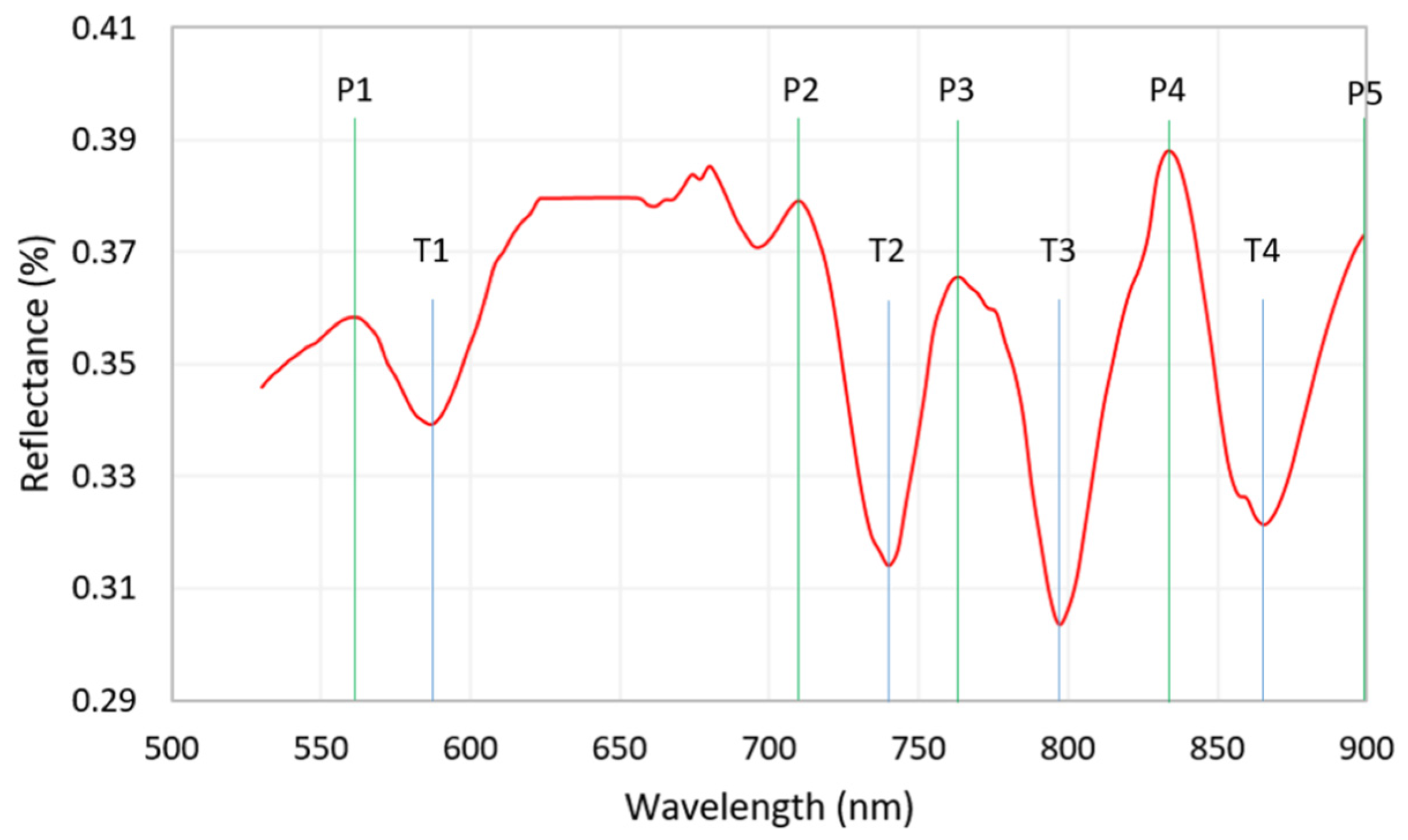
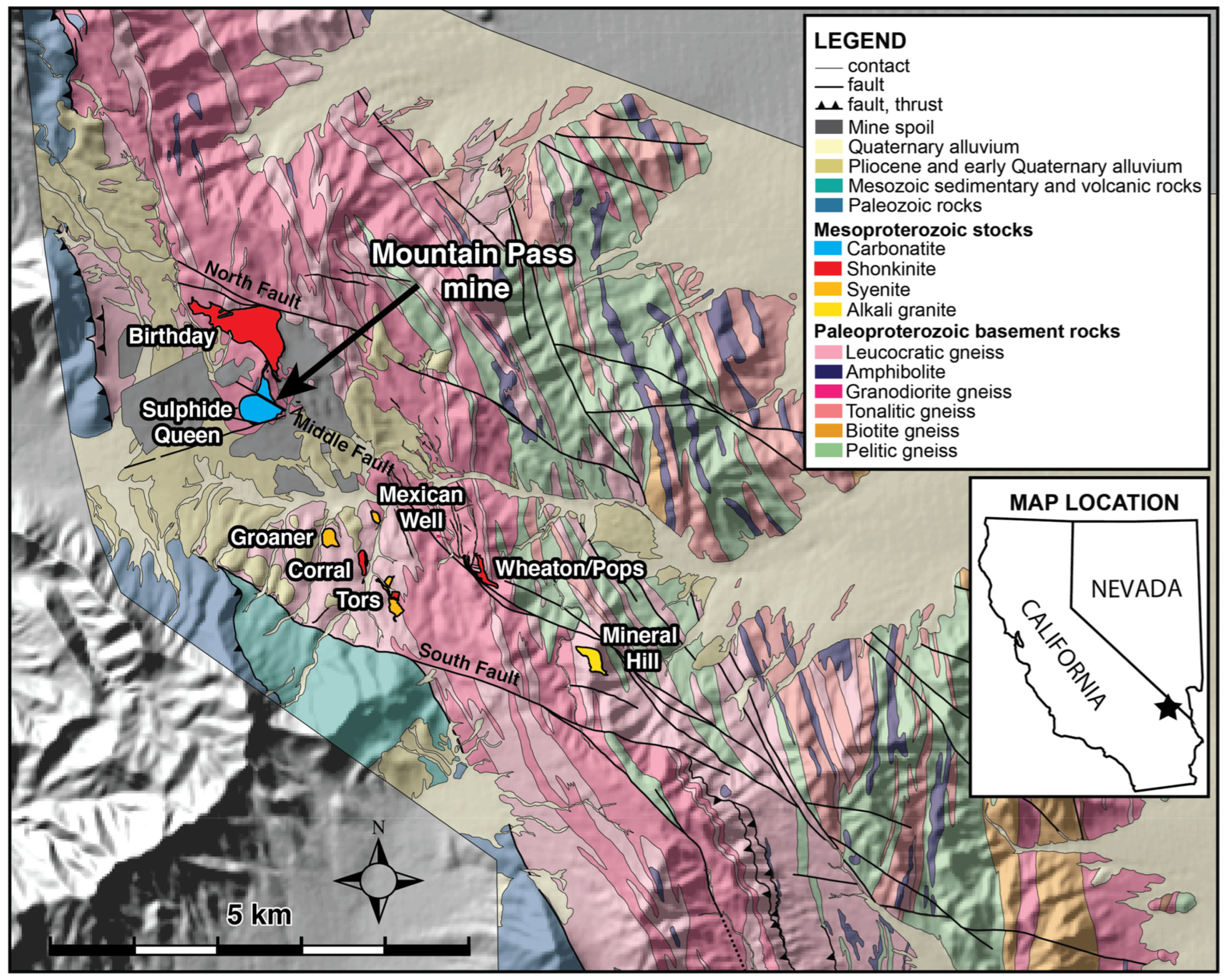

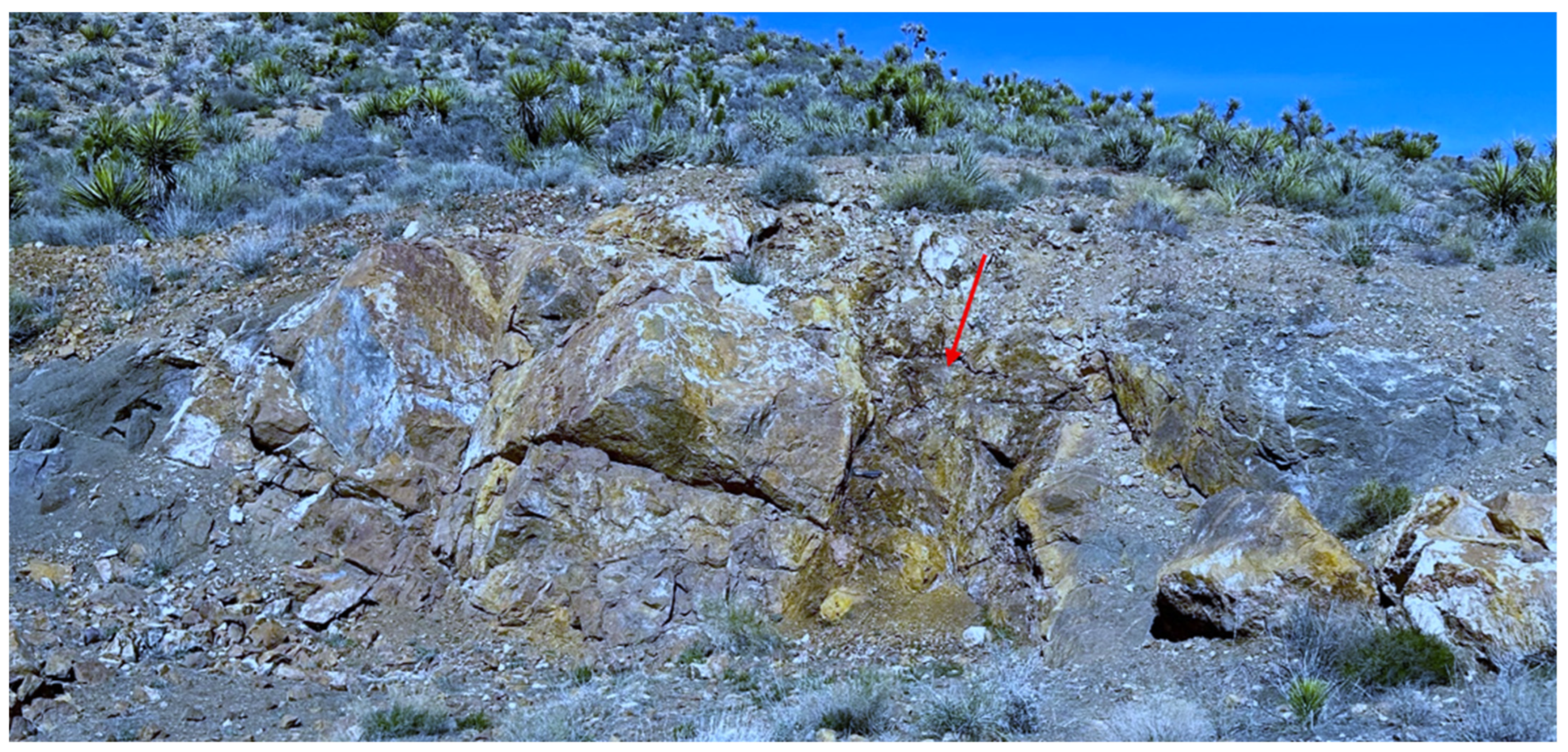
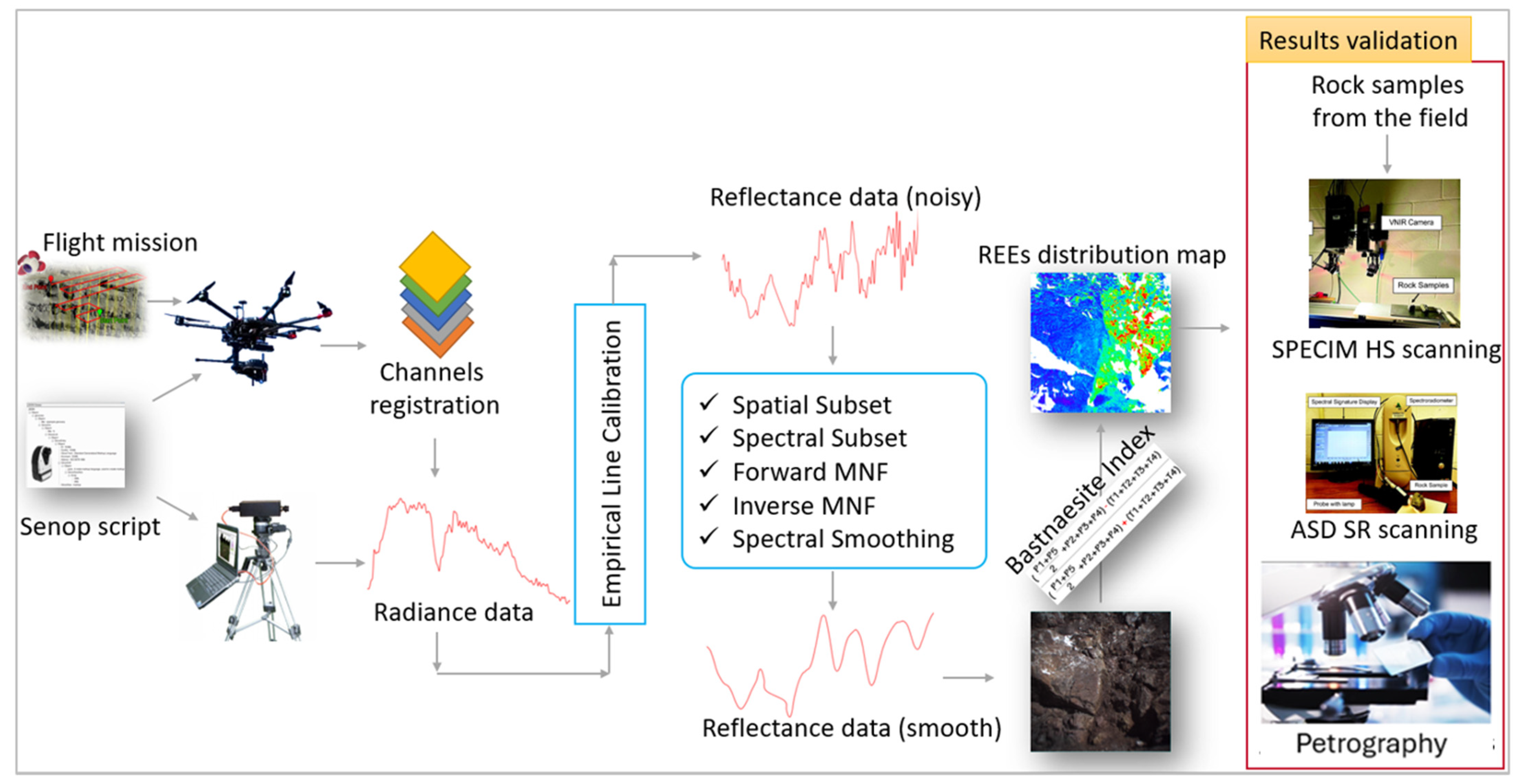

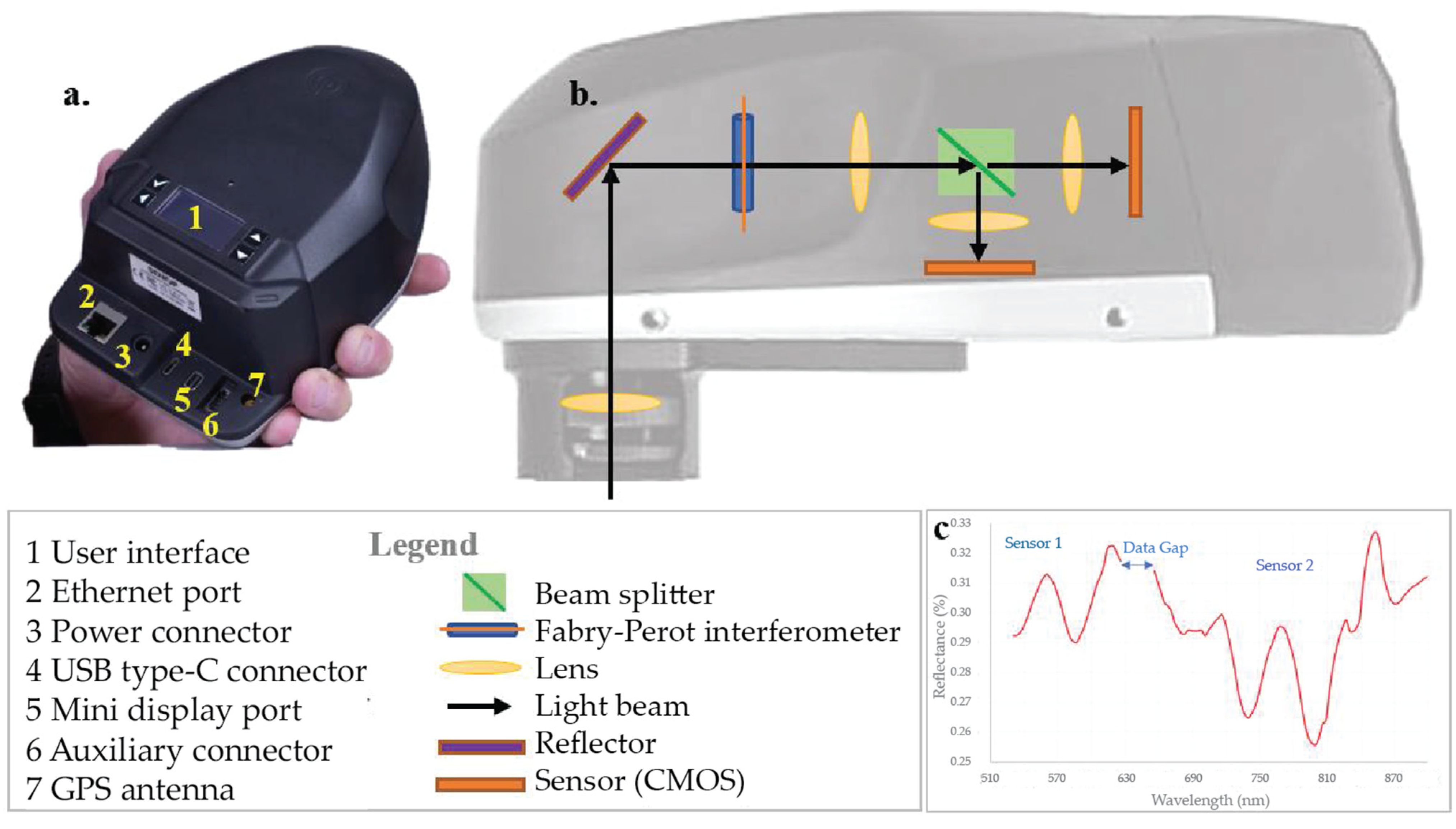
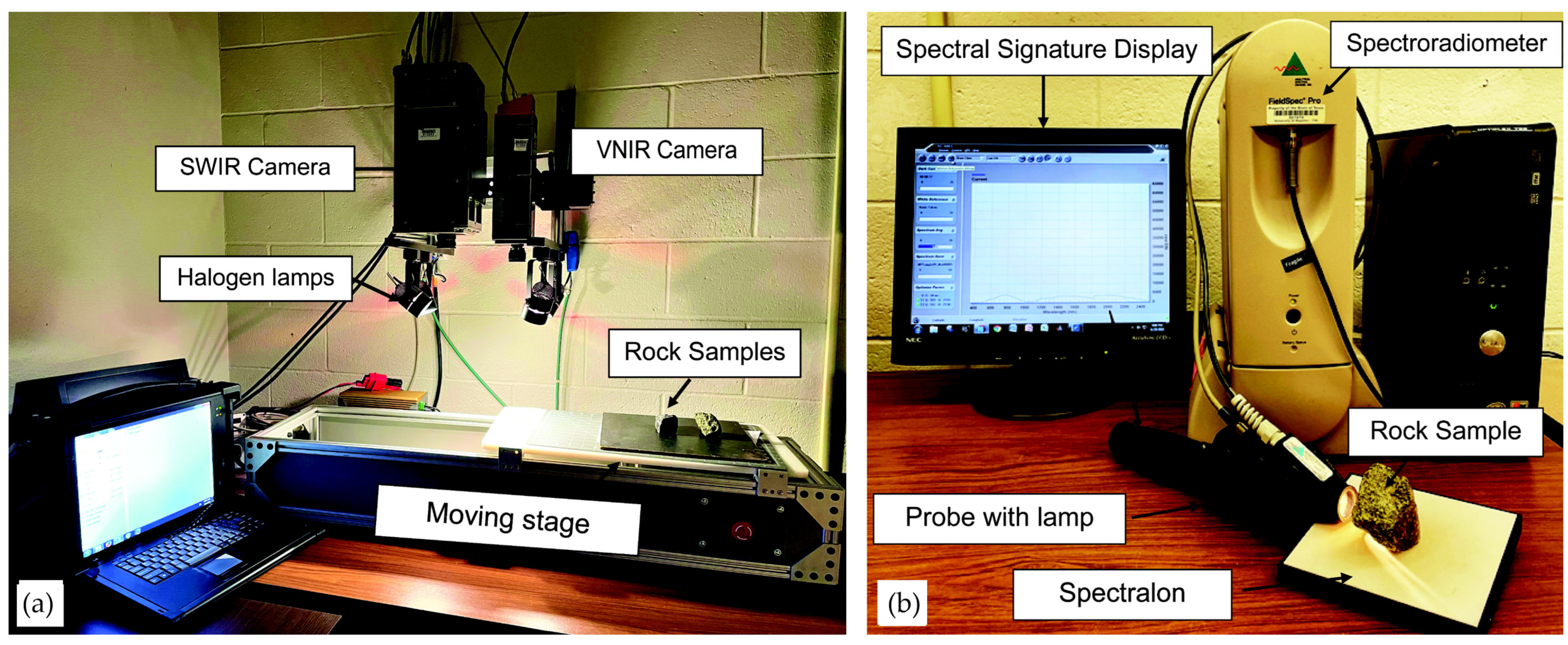
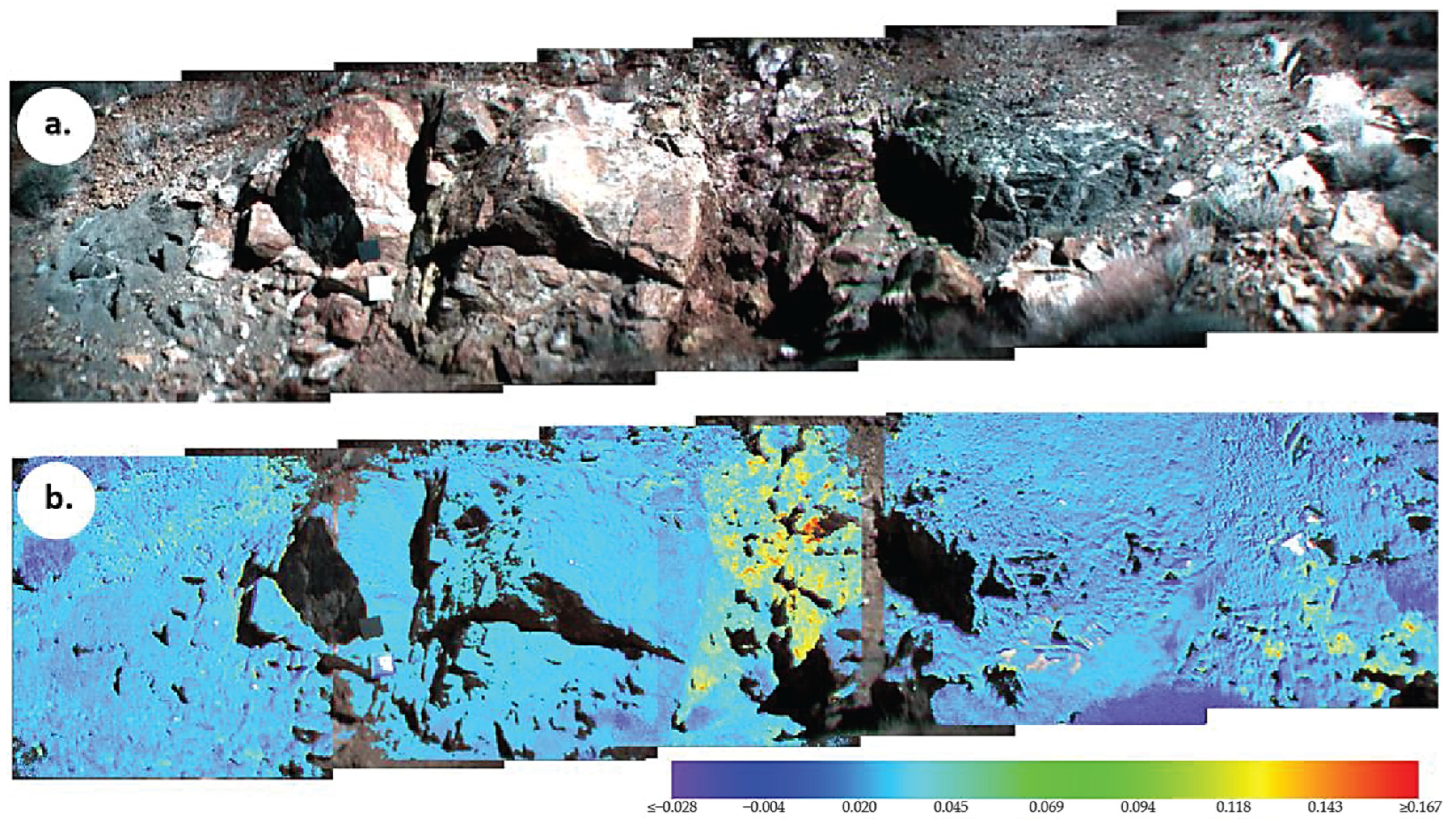

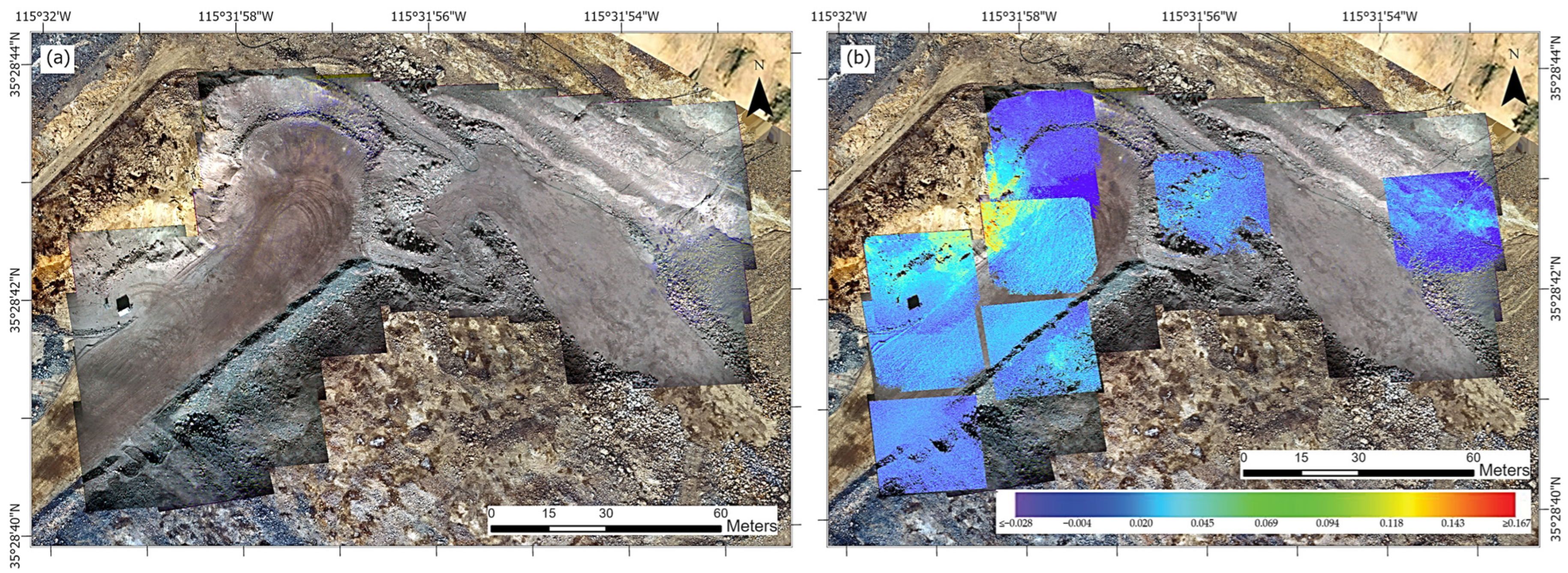

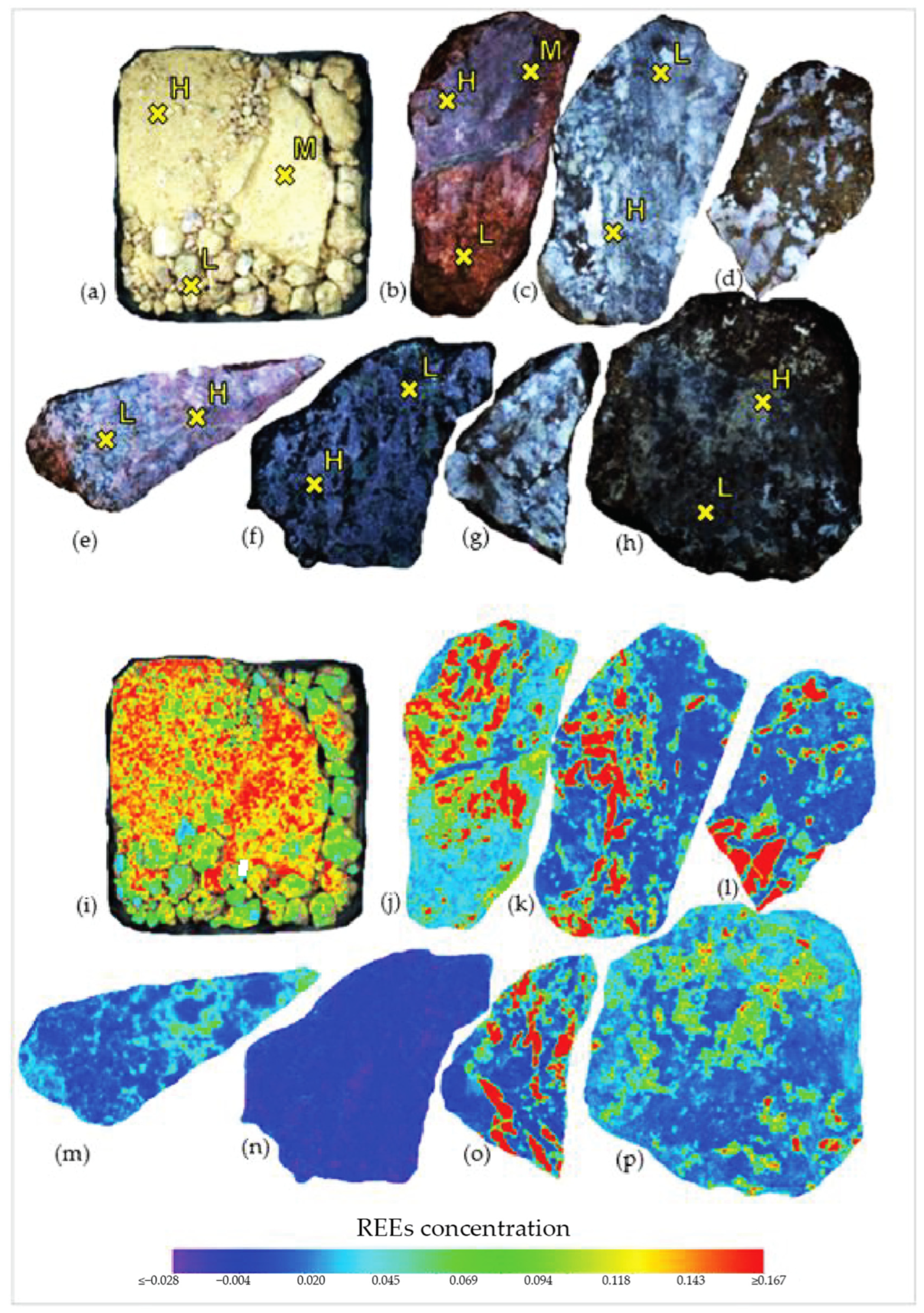

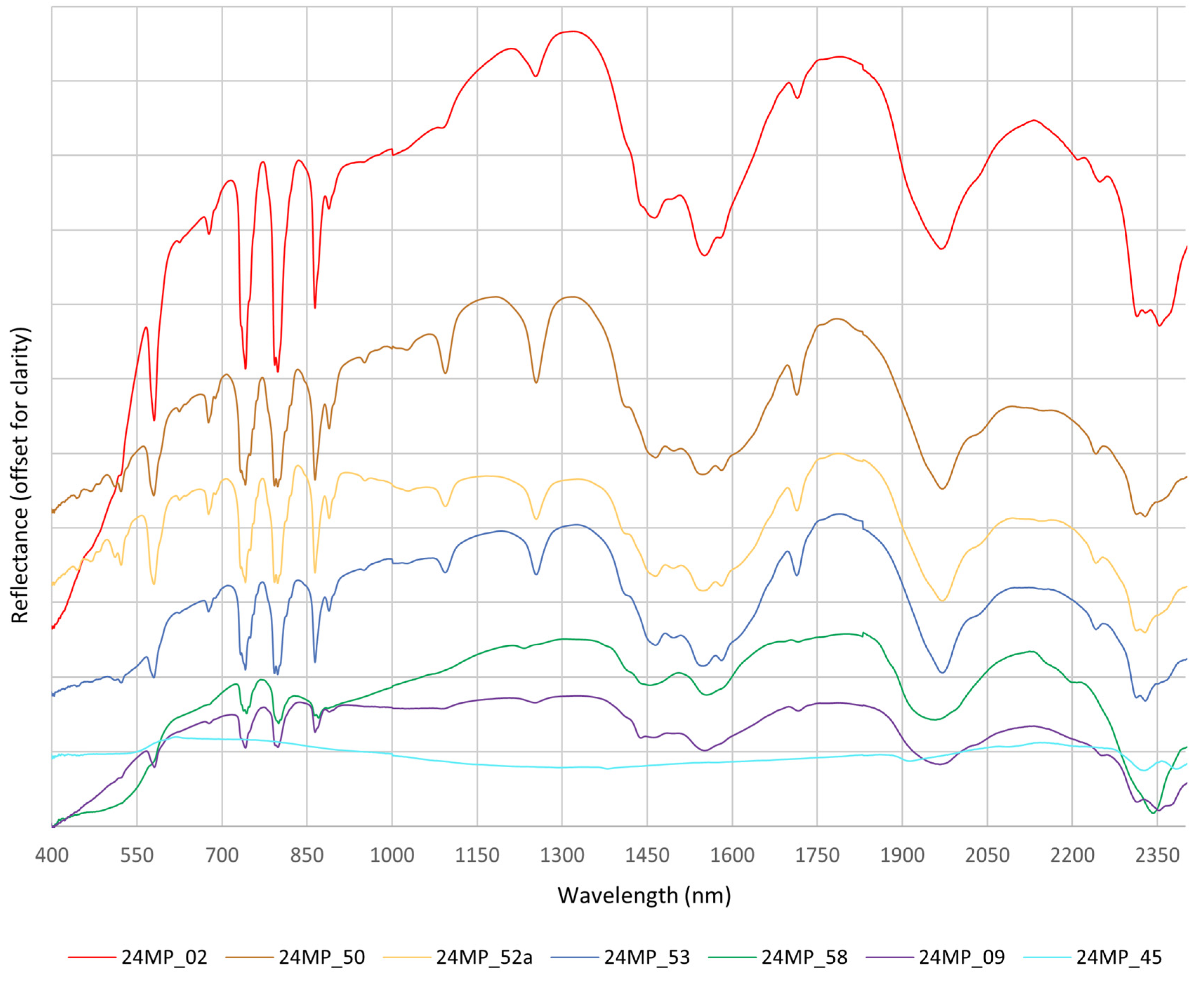
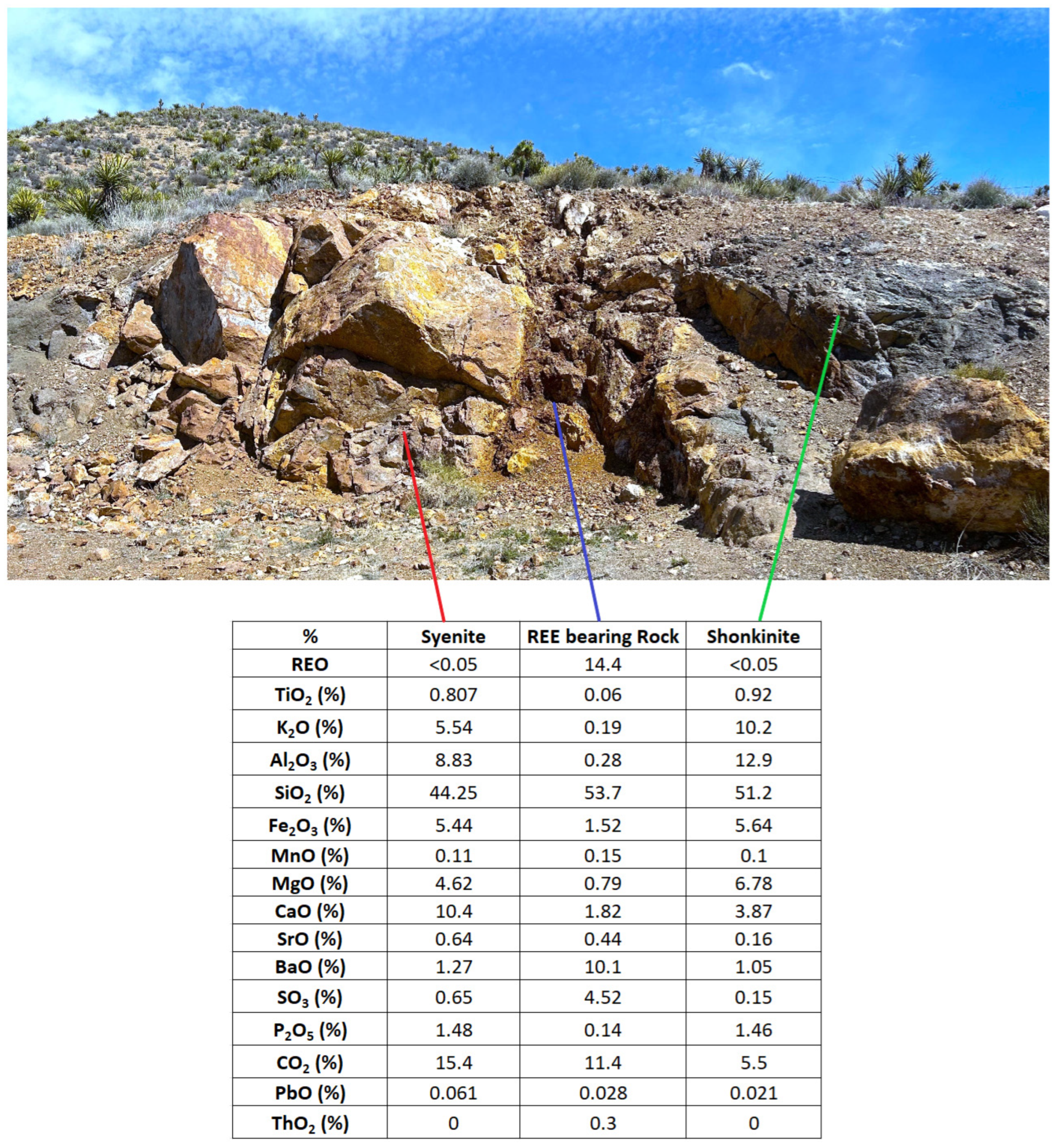
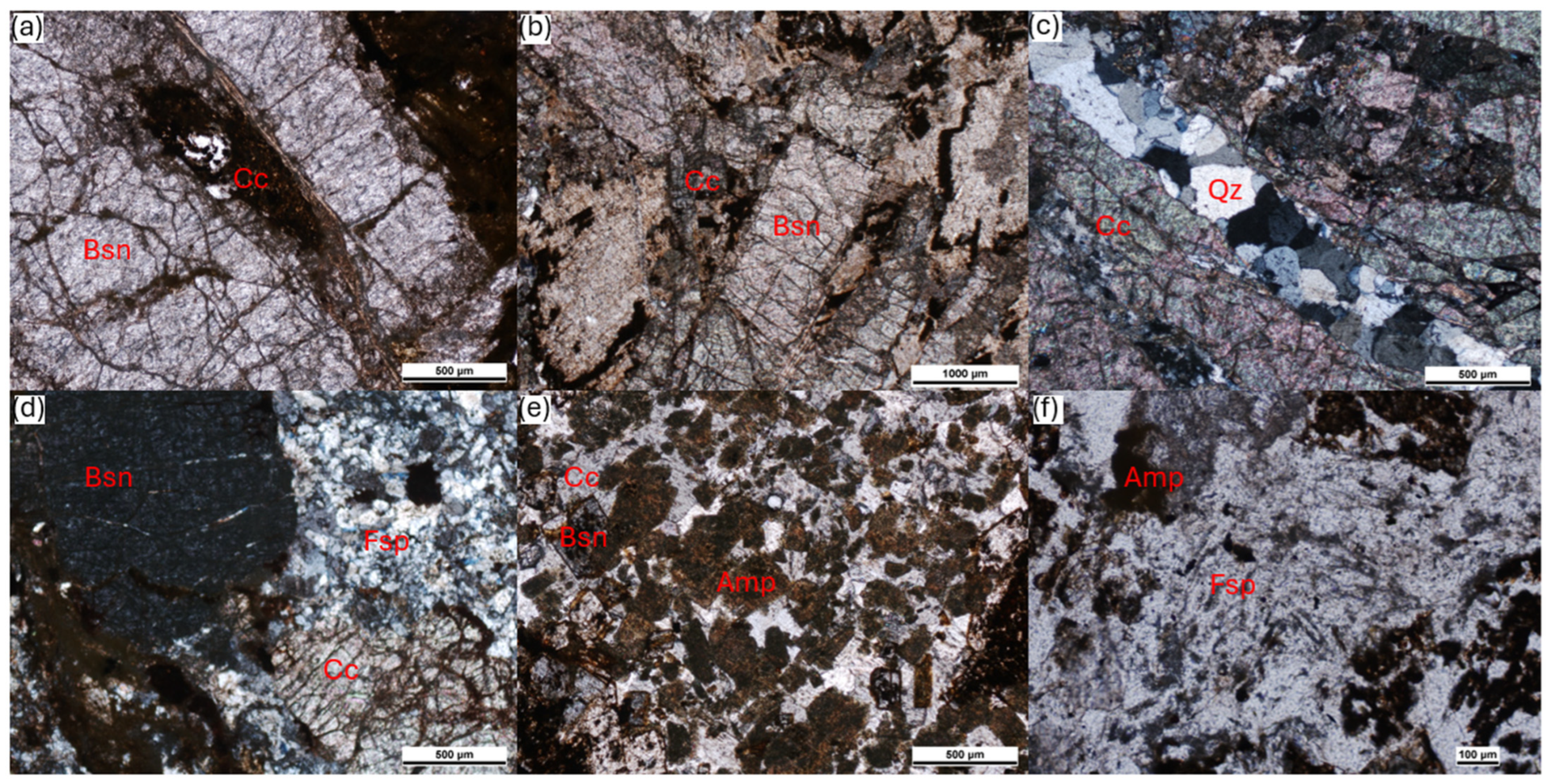
| Feature | Value | Feature | Value |
|---|---|---|---|
| Camera weight | 990 g | Field of View | 36.8° |
| Camera size (L × W × H) | 199.5 × 130.9 × 97.2 mm | Spectral range | 500–900 nm |
| Storage capacity | 1 TB (built-in hard drive) | Spectral bands | Up to 1000 bands |
| Image frame size | 1024 × 1024 pixels | FWHM bandwidth | 15 nm, 20 nm, 25 nm |
| GPS | Integrated in camera | Frame rate | 12-bit, 10-bit |
Disclaimer/Publisher’s Note: The statements, opinions and data contained in all publications are solely those of the individual author(s) and contributor(s) and not of MDPI and/or the editor(s). MDPI and/or the editor(s) disclaim responsibility for any injury to people or property resulting from any ideas, methods, instructions or products referred to in the content. |
© 2024 by the authors. Licensee MDPI, Basel, Switzerland. This article is an open access article distributed under the terms and conditions of the Creative Commons Attribution (CC BY) license (https://creativecommons.org/licenses/by/4.0/).
Share and Cite
Qasim, M.; Khan, S.D.; Sisson, V.; Greer, P.; Xia, L.; Okyay, U.; Franco, N. Identifying Rare Earth Elements Using a Tripod and Drone-Mounted Hyperspectral Camera: A Case Study of the Mountain Pass Birthday Stock and Sulphide Queen Mine Pit, California. Remote Sens. 2024, 16, 3353. https://doi.org/10.3390/rs16173353
Qasim M, Khan SD, Sisson V, Greer P, Xia L, Okyay U, Franco N. Identifying Rare Earth Elements Using a Tripod and Drone-Mounted Hyperspectral Camera: A Case Study of the Mountain Pass Birthday Stock and Sulphide Queen Mine Pit, California. Remote Sensing. 2024; 16(17):3353. https://doi.org/10.3390/rs16173353
Chicago/Turabian StyleQasim, Muhammad, Shuhab D. Khan, Virginia Sisson, Presley Greer, Lin Xia, Unal Okyay, and Nicole Franco. 2024. "Identifying Rare Earth Elements Using a Tripod and Drone-Mounted Hyperspectral Camera: A Case Study of the Mountain Pass Birthday Stock and Sulphide Queen Mine Pit, California" Remote Sensing 16, no. 17: 3353. https://doi.org/10.3390/rs16173353










